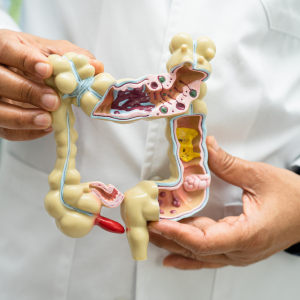Large Polyp Removal

If a large colon polyp is detected during a colonoscopy, the doctor may decide to remove it during the procedure. This is typically done using a technique called polypectomy. The doctor will use special instruments through the colonoscope to remove the polyp and a sample of surrounding tissue. The sample will be sent to a laboratory for testing to determine if the polyp is cancerous or benign (non-cancerous).
If the polyp is cancerous or if there are several large polyps, the doctor may recommend additional treatment, such as surgery to remove a portion of the colon. The specific treatment recommendation will depend on the size, location, and type of polyp, as well as the overall health of the patient. It is important to follow the recommended screening guidelines for colon cancer to help detect and remove polyps before they have a chance to become cancerous.
Benefits & Risks
As with any medical procedure, there are potential risks and benefits associated with the removal of large polyps during a colonoscopy.
Benefits:
- Can help prevent the development of colon cancer. Most colon cancers develop from polyps, so removing polyps before they have a chance to become cancerous can reduce the risk of colon cancer.
- Removing polyps during a colonoscopy allows the doctor to take a sample of the tissue for testing to determine if the polyp is cancerous or benign.
Risks:
- Small risk of bleeding or infection after the procedure.
- Perforation (tearing) of the colon, although this is rare.
- Small risk of reaction to the anesthesia used during the procedure.
Overall, the benefits of removing large polyps during a colonoscopy, such as the reduced risk of colon cancer and the ability to diagnose and treat problems in the colon, typically outweigh the potential risks. Your doctor will discuss the potential risks and benefits with you before the procedure and answer any questions you may have.
FAQs
A large polyp is a growth on the inner lining of the colon that is larger than 1 centimeter (about 0.4 inches) in diameter. Large polyps have a higher risk of being cancerous or becoming cancerous over time.
The removal of a large polyp during a colonoscopy is not considered surgery. It is a minimally invasive procedure that is performed using a colonoscope, which is a flexible tube with a camera at the end. The procedure is usually performed under conscious sedation, which means the patient is awake but relaxed during the procedure.
After a large polyp is removed during a colonoscopy, you may experience bloating, gas, and mild discomfort for a few days. Your doctor will give you instructions on how to care for yourself after the procedure, including any dietary restrictions. It is important to follow these instructions and contact your doctor if you have any concerns or if your symptoms do not improve.
A large polyp is typically removed during a colonoscopy using a technique called polypectomy. The doctor will use special instruments through the colonoscope to remove the polyp and a sample of surrounding tissue. The sample will be sent to a laboratory for testing to determine if the polyp is cancerous or benign (non-cancerous).
Some large polyps require a technique called endoscopic mucosal resection, or EMR. During an EMR, a solution is injected under the polyp to lift it away from the wall of the colon. This allows the polyp to be resected in a safe manner, decreasing the risk of bleeding or a perforation.